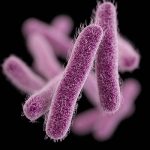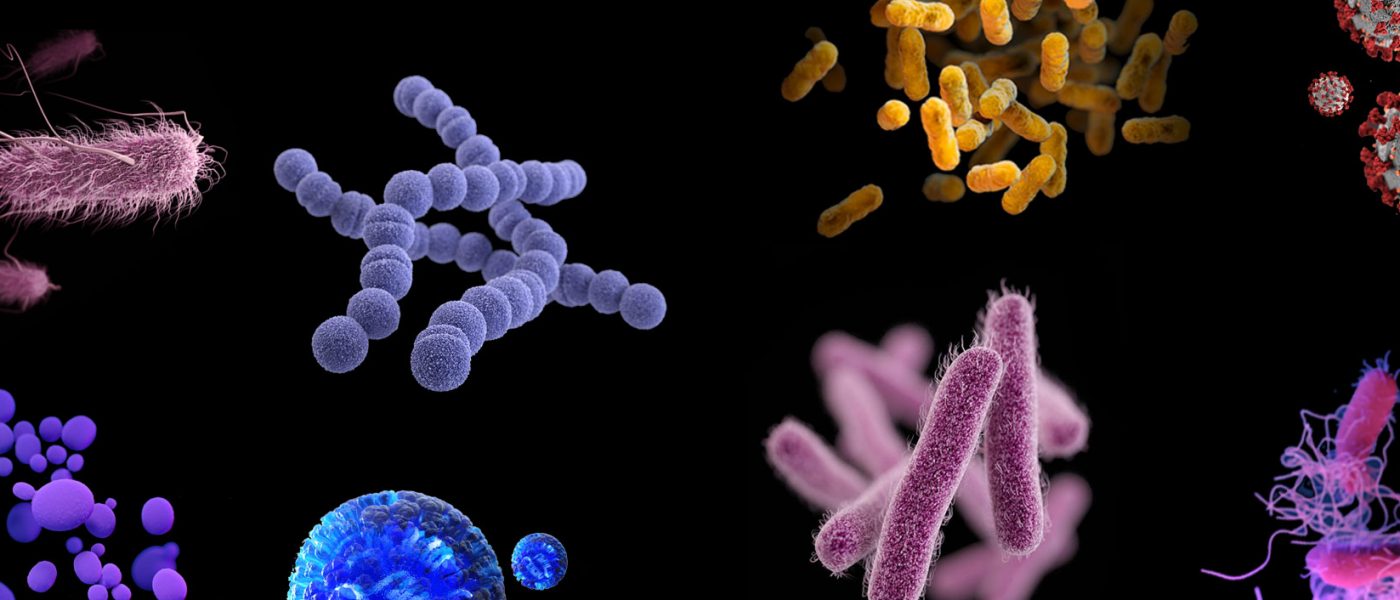Information Box Group

Candida Auris What you need to know
(Candidiasis)
What you need to know about Candida Auris
Q&A with Jianping Xu & Lindsay Kalan
Jianping Xu is a professor of Biology at McMaster and the Faculty of Science Research Chair in Understanding Fungal Threats to Humans. Lindsay Kalan is an Associate Professor of Biochemistry & Biomedical Sciences at McMaster, where she studies the skin microbiome. Both are members of the Michael G. DeGroote Institute for Infectious Disease Research.
 What is Candida auris?
What is Candida auris?
KALAN: Candida auris — or C. auris — is a type of fungus that can colonize your skin and cause invasive infection in people. It is a concerning pathogen because it is resistant to many of the antifungal drugs that are available and the mortality rate for infected people can be very high.
XU: This fungus was first recognized as a distinct species in 2009 by a Japanese scientist who recovered the yeast from the ear of a patient. Since then, it has been recorded in over 50 countries, where it’s caused primarily hospital-related outbreaks and also common infections. After its sudden emergence, researchers began analyzing samples taken before 2009 to see if they had been misidentified to other species. And indeed, they identified samples that also had this fungal infection. The first current known live culture is from the mid-1990s.
Where are we finding C. Auris? And why is its recent spread a concern?
KALAN: To date, C. auris has largely been spreading through the healthcare system. As patients or healthcare workers move between clinical centres, they may be asymptomatically colonized with C. auris and unknowingly contributing to its spread. Regarding the recent surge, it has been hypothesized that the COVID-19 pandemic may have contributed to a rise in C. auris cases due to changes in infection prevention and control measures, staff shortages, and other strains on the healthcare system. More generally, a reason for its steady rise is our ability — or lack thereof — to detect and screen C. auris. This pathogen can be misidentified or go unscreened altogether, leading to undetected cases. This growth in spread is of concern because C. auris can cause severe bloodstream infections with a mortality rate in the range of 30-60 percent for those diagnosed.
XU: Indeed, C. Auris can persist in a hospital environment for extended periods of time. Some of the strains are resistant to disinfectants, to dryness — whatever stress you put on them. And this fungus can also grow at high temperatures — for instance, at 42 degrees, which is well above our typical fever. It’s also quite resistant to osmotic stress — those high saline and other types of environments that are typically stressful for organisms. This fungus is just somehow able to fend it off and survive and thrive in those environments. We really don’t know much about the entire transmission route, but it’s most likely it’s through contact. We know we shed. For instance, if it’s in the ear wax and we shed the ear wax, it could be released into the environment. It’s been found in all kinds of environments in hospitals — the bedding, the pillows, the sinks, the floors. Once it is there, it’s quite resistant to some of the disinfectants that we use to mop them off. And when a new person or another person comes in, they can pick it up.
Are there any therapeutics or vaccines to treat or protect against C. auris?
KALAN: Infections from C. auris are usually treated with a class of antifungal drugs called echinocandins; however, a small percentage of cases are resistant to these medications and the percentage of pan-resistant strains is now increasing. Thus, new strategies to slow transmission coupled with the development new antifungal therapeutics will be critical moving forward. My lab has been studying how bacterial members of the healthy skin microbiome are able to provide colonization resistance to C. auris. We have found that commensal bacteria — the bacteria that normally live on your skin — are able to inhibit the growth of C. auris through the production of secreted metabolites. This is exciting because we could potentially develop new therapeutics that target C. auris to both prevent carriage in susceptible individuals and treat infections.
XU: Most of the strains are not only drug-resistant, but are in fact resistant to multiple drugs. Almost all of them are resistant to fluconazole, which has been one of the major drugs for treating candida infections. And a high proportion are also resistant to the other types of drugs like polyenes and Flucytosine. A recommended line of treatment has been echinocandins, which have been effective for the last 13 or 14 years, although, as noted, there are now strains resistant to this drug as well. Resistance to all the currently applied antifungal drugs, as well as previously applied antifungal drugs, have been reported in other fungi. But typically, each of those resistant strains is only resistant to one or a couple of related drugs, not to the whole spectrum. So, this is quite unique for C. auris. Right now, the specific mechanisms are not really well understood, but one of the hypotheses is that because of C. auris’ ability to handle the high temperature and high stress that led to some of the emergence of the fungus in the first place — those features also enable them to be resistant to some of those drug-induced stressors.
What do scientists think prompted the fungus’ sudden emergence?
XU: When we have genetically divergent lineages of the same species that emerged at very similar times at different parts of the world, it suggests some kind of common denominator. Arturo Casadevall and his colleagues at Johns Hopkins University have proposed that global warming may be responsible. We are seeing the temperature increase in certain parts of the world and fungal stressors building up. There’s also increased human movement and the potential for bringing environmental microorganisms to the human environment.
What’s next for researchers studying C. Auris?
XU: Scientists are now looking at the samples that have been submitted for metagenome sequencing — samples from soil, fresh water, salt water, air samples, human samples. And indeed, we are now finding more and more signatures of this fungus in those kind of environments. No live culture has been found yet in animals, but I think it’s only a matter of time that we’re going to find those kind of connections.
What are some common symptoms to watch for regarding?C. auris, and when should you see a doctor?
KALAN: Most healthy people are not a risk of a C. auris infection; however, those who are at risk should watch for symptoms of invasive infection, which include fever and chills that do not respond to antibiotic treatment. If you suspect you have a fungal or healthcare-associated infection, you should seek care.
Kalan interview by Blake Dillon.
Xu interview by Maureen Lawlor.

E. coli What you need to know
(Food poisoning, diarrhea)
What you need to know about E. coli
Q&A with Brian Coombes
Brian Coombes is professor and chair of the Department of Biochemistry and Biomedical Sciences at McMaster University, and the Canada Research Chair in Infectious Disease Pathogenesis. His lab’s major focus is on drug-resistant bacteria associated with acute and chronic disease. Here, Coombes, a fellow of the American Academy of Microbiology, shares what you need to know about E. coli and how to prevent it.

What is E. coli?
Escherichia coli (or E. coli) is a bacteria that is mainly found in the guts of mammals. In most cases, E. coli do not cause disease in animals and humans, but some strains have evolved to be quite pathogenic to humans. These more dangerous strains are the ones associated with outbreaks and severe disease.
Why does an outbreak cause such severe illness?
Severe illness linked to E. coli is all about the strain involved. Some strains of E. coli are relatively harmless, while others cause serious illness ranging from diarrhea, to bloodstream infections, to organ damage. The strains associated with outbreaks tend to have a very low infectious dose (the minimum number of bacteria you need to ingest in order to become infected) and so even a small number of bacteria can spread to many people relatively easily.
What treatments are available for E. coli infections?
For the E. coli strains linked to the recent outbreak in Alberta, there are few treatment options that target the bacteria directly. Antibiotics cannot be used because they make the illness worse by making the bacteria produce more of the toxin that is harming the body. Supportive therapy such as IV fluids and nutrition are used in the hospital setting for these types of infections.
What are some promising advances in treating E. Coli infections?
Advances in treating E. coli infections, like the strain causing the outbreak in Alberta (O157:H7), are not that well developed. Phage therapy might be a promising route, and also new treatments that try and block the bacteria from sticking to our cells and treatments that try and inhibit the bacteria’s ability to make toxins.
What are some of the long-term effects of an E. coli infection?
Infections caused by Shiga toxin-producing E. coli can have quite serious short and longer-term effects. In the short term, about 10 per cent of people infected will develop kidney damage associated with the bacteria’s toxin. This condition is called hemolytic uremic syndrome (HUS) and requires dialysis to help the body remove toxins while the kidneys try to recover. In extremely serious cases, the kidneys may sustain permanent damage that limits their function. These infections have also been associated with increased risk of chronic gut disorders, like irritable bowel syndrome, and disease, like inflammatory bowel disease (ulcerative colitis and Crohn’s disease). This increased risk for IBS and IBD can last for years after the infection first took place.
Who is most at risk?
We generally think that people with less developed or weakened immune systems are most at risk, including children.
How can people protect themselves?
Good personal and food hygiene are required to protect yourself against infection from E. coli. These bacteria can be transmitted to humans in undercooked meat products but have also been associated with uncooked foods, such as raw vegetables that are sometimes fertilized with manure that is contaminated with E. coli. Washing vegetables thoroughly with copious amounts of fresh water is recommended.
Interview by Jennifer Stranges.

Influenza A – H5N1 What you need to know
(Avian Influenza — “Bird Flu”)
What you need to know about H5N1
Q&A with Matthew Miller
Matthew Miller is the scientific director of the Michael G. DeGroote Institute for Infectious Disease Research at McMaster University. He is an expert in viral pandemics, including those caused by influenza and COVID-19.
 What is H5N1?
What is H5N1?
H5N1 is what we call a highly pathogenic avian influenza virus. What differentiates it from other types of influenza is that it is very deadly. Waterfowl (i.e., ducks, geese, etc.) are the natural hosts of most influenza A viruses, and highly pathogenic H5N1 can kill birds in really high numbers.
In birds, influenza virus causes infection in the gastrointestinal tract and can be spread through birds’ feces. Spillover events can happen when animals or humans come into contact with infected birds or the feces of infected birds.
Influenza viruses are often very limited in the tissues that they can infect, but highly pathogenic avian influenzas like H5N1 can cause infection throughout the body, including in places like the brain. This is what makes it particularly deadly for not only birds, but other animals and humans too.
How has it evolved recently, and why are such changes concerning?
Highly pathogenic H5N1 has been around for a long time, but it used to be significantly more geographically limited. Spillover events were more common in Asia, the Middle East, and northeast Africa, but over the past year, waterfowl that migrate along seasonal migratory paths from Europe had a large outbreak of H5N1. As they migrated, they brought that virus with them throughout Europe and into North and South America.
Birds like to congregate in farm fields and in coastal areas, so this poses a particular risk to these areas, where other species of animals often live.
In Canada, there was a large outbreak of highly pathogenic H5N2 influenza virus in turkey and chicken farms in 2015. The good news is that there are really good surveillance programs in place on the agricultural side to detect highly pathogenic avian flus in poultry.
Another change we’ve seen recently is increased spread into other animal species, like mink and sea lions. Mink are very susceptible to flu, but what has been observed in the past is that the spread of this virus into mink usually causes a dead-end infection. This means mink aren’t spreading it to other mink — they’re only getting it from infected birds or their droppings.
But what seems to have happened recently in Spain is that the virus has recently been transmitted from mink to mink. This has raised some concerns because mink are mammals, so they’re biologically one step closer to humans than birds are.
Although there’s been an extraordinarily high death rate in people who get infected with highly pathogenic avian influenza — around 50 per cent — humans, like mink, have historically been a dead-end host. We don’t transmit the virus efficiently to other humans. This is a prerequisite for pandemics, and is a reason why H5N1 has not caused a pandemic to date.
Does the virus have pandemic potential for humans?
Efficient transmission between humans is a prerequisite for a pandemic, and there is currently no evidence that the virus is capable of doing this, so the pandemic risk is low, at least for now. That said, the risk posed by H5N1 warrants hyper-vigilance when it comes to surveillance and prevention.
Almost 10 years ago, there was a series of very famous studies that experimentally tried to determine how the virus would need to change in ferrets to move beyond dead-end infections and become transmissible. The authors discovered a series of mutations that were associated with transmissibility.
Though it’s not clear whether these same mutations would enable the virus to transmit in humans, they at least give us something to monitor and help assess risk.
In addition, the authors found that initially — when the virus could not transmit — it caused very severe disease in the ferrets. But as the virus became transmissible in ferrets, it no longer caused severe disease. So the evolution toward transmissibility reduced the virus’ pathogenicity. There’s no guarantee that this will always happen, but for respiratory viruses, what often occurs is that when they cause severe disease, they do so in the lower lung.
But more efficient transmission tends to occur when the virus moves toward the upper respiratory tract, which in turn often reduces infection severity.
Viruses only “care” about transmitting efficiently. Virulence, or the severity of illness a virus causes, is a secondary by-product of infection.
Are there any vaccines or therapeutics available to help protect against or treat H5N1?
Unlike the situation we were in with COVID-19, where there were no approved vaccines at all on the market for any type of coronavirus, we have a huge global infrastructure for developing and distributing flu vaccines. In fact, new flu shots are literally produced every year. So to make a vaccine for a new flu virus, we can rely on the existing vaccine manufacturing processes that we use for seasonal flus.
However, there are some limitations. The process of producing a new vaccine to respond to a pandemic is slow — probably too slow to stop a pandemic from happening. In addition, the efficacy of flu vaccines could always be better.
But the good news is that we know how to make them, there are existing manufacturing facilities located all around the world, and many manufacturers already stockpile avian flu vaccines in the event that a new epidemic or pandemic were to emerge.
We also have a small number of approved antivirals for influenza. Most H5N1 viruses are susceptible to these drugs.
Your lab has been working on developing a universal flu vaccine. Is that something that could help against highly pathogenic flus, like H5N1?
A universal vaccine would be a game-changer to mitigate risk of pandemics caused by highly pathogenic flus. In the event of a new flu pandemic, a universal vaccine would reduce the number and severity of infections, buying researchers time to develop an even more specific vaccine to address the specific virus that is circulating.
We’re also working on “universal” monoclonal antibodies. During the COVID-19 pandemic, we saw the approval of monoclonal antibodies to prevent infection in high-risk people and to treat people who were severely ill. The problem was that as the virus evolved and mutated, those antibodies didn’t work anymore. But we’ve identified antibodies that bind to parts of the flu virus that are shared among all types of flu, and are intolerant to mutations, and so we could deploy those antibodies to provide immediate immunity to people.
This is beneficial because, when you get a vaccine, it takes about two weeks for your body to mount an immune response that protects you. But when you get antibodies, you’re protected right away. So having these different layered approaches is really important to pandemic preparedness strategies.
What can people do to protect themselves from catching H5N1?
The most important thing right now is to be incredibly cautious around birds, because they are the main vehicles for spreading these highly pathogenic avian flus. Hunters, farmers, poultry workers, and even homeowners who has birds on their property should be particularly cautious right now. People should also avoid direct handling of dead animals.
Is there any risk to consuming poultry right now?
No. Surveillance is excellent in poultry farms, so consumption of poultry really shouldn’t be a risk. Plus, H5N1, much like the virus that causes COVID-19, is a virus that is very environmentally sensitive. So, when you cook poultry, you would definitely kill any possible traces of the virus in the process.
What are some common symptoms to watch for, and when should you see a doctor?
Flus in humans typically present as a respiratory infection. But the difference with highly pathogenic avian flus is that they can spread beyond the respiratory tract and that’s what makes them so dangerous. It’s highly unlikely that you would contract H5N1 at this point, but, as a general rule, if you experience any signs of illness that you think are unusual (e.g., fever, chills, muscle aches, severe lethargy), that’s always the best time to see a doctor. The average person has an extremely low risk of contracting H5N1 at this point.
Interview by Blake Dillon.

Salmonella What you need to know
(Salmonellosis, food poisoning)
Salmonella - What you need to know
Q&A with Brian Coombes
Brian Coombes is professor and chair of the Department of Biochemistry and Biomedical Sciences at McMaster University, and the Canada Research Chair in Infectious Disease Pathogenesis. His lab’s major focus is on drug-resistant bacteria associated with acute and chronic disease. Here, Coombes, a fellow of the American Academy of Microbiology, shares what you need to know about Salmonella and how to prevent it.

What is Salmonella?
Salmonella is a genus of bacteria that typically infects the gastrointestinal tract of many different mammals, including humans. It is generally associated with food-borne illness, as it is very common in poultry and other animals used for food production.
How do people encounter Salmonella?
Handling raw food, especially meat products, is perhaps the greatest risk for Salmonella infection. These bacteria can live in animals that we raise for food production without causing significant signs of illness, so food producers often won’t even know that their animals are sick. As well, Salmonella can contaminate food at virtually any point during the food production process, so it’s not necessarily even sick animals that ultimately lead to human infection. For example, contamination could happen at a processing plant or during packaging processes. Also, these bacteria can contaminate foods that we don’t necessarily cook, like lettuce and vegetable products. That’s why it’s essential that care is taken when handling all food products.
Salmonella can also spread from person-to-person. Enteric bacteria, like Salmonella, often cause symptoms like diarrhea. And while diarrhea is a symptom of the infection, it is also a process that bacteria have evolved to induce in order to help them spread from one host to another. So, by actively inducing inflammation in the gut, which leads to diarrhea, one person can expel millions of bacteria that can then contaminate bedding, clothing, door handles, and other items that other people might come into contact with. Because of this, Salmonella is very easily transmitted from person-to-person.
What are some common symptoms to watch for, and when should you see a doctor?
Salmonella typically causes gastrointestinal symptoms, including cramping, nausea, diarrhea, and vomiting. Generally, your body can handle the infection — you’ll likely feel sick for about two or three days, but you’ll often fully recover within a week or so without much medical intervention. If symptoms persist beyond four days without signs of improvement, though, a doctor should be seen. They can prescribe antibiotics to help resolve severe illness. Because regular symptoms include diarrhea and vomiting, Salmonella infection can lead to massive amounts of water loss. So, people whose symptoms are not resolving are at risk of dehydration, which can complicate things further.
What treatment options are available for Salmonella?
If you seek medical care for a suspected case of Salmonella, they will likely take either a stool sample or a swab and send it off to a clinical microbiology lab, where they can confirm what you’re infected with. When the results come in, they can perform antimicrobial susceptibility testing to determine which antibiotic would be most effective against the particular strain that you’re infected with. That process can take a long time, though, so oftentimes clinicians will prescribe a broad-spectrum antibiotic, which can help with recovery. In some cases, however, the bacteria causing the infection is so extensively drug resistant that all but one or two classes of antibiotics will fail. And it’s not always the case that those drugs that should work will be available or approved for use in Canada. As such, prevention is really the best medicine for bacteria like Salmonella.
What can people do to protect themselves from Salmonella?
A lot of Salmonella prevention comes down to having good personal and food hygiene. This means strict handwashing and ensuring that you don’t cross-contaminate utensils or other food-prep instruments. Handwashing during food preparation is particularly important, but you should also wash your hands when you return from public places or use the restroom.
Who is most at risk of Salmonella infection?
Salmonella can infect anybody, and mostly everybody who is infected will exhibit symptoms — it’s very indiscriminate in that way. That said, children under five years old are often associated with Salmonella outbreaks. This is for a few reasons. First, it’s because kids are simply harder to keep clean — they don’t wash their hands the same way or as often as adults do, they often have their hands in and around their mouths, and they crawl and play on the floor. They have a very heavy reliance on adults to look after their hygiene for them. As well, young kids have immune systems that are not as well-trained as those of adults. Their immune systems just haven’t seen as many things, so they can be hyper-reactive or in some cases slow to react to infections. Finally, kids are just much smaller than adults and therefore don’t have as much fluids as adults do, so infections that produce symptoms such as vomiting and diarrhea leave them more prone to dehydration.
Interview by Blake Dillon.

Shigella What you need to know
(Shigellosis)
What you need to know about Shigella
Q&A with Jeffrey Pernica
Jeffrey Pernica is a member of McMaster University’s Michael G. DeGroote Institute for Infectious Disease Research. He has been studying Shigella in southern Africa for a decade.
 What is Shigella?
What is Shigella?
Shigella is a group of bacteria especially common in low- and middle-income countries that frequently cause gastrointestinal infections — or diarrheal disease. Shigella infections, also known as shigellosis, do occur in Canadians in Canada; however, the majority of these infections are associated with travel. People who develop shigellosis while abroad often continue to shed infective bacteria in their stool for weeks after returning home.
These bacteria are transmitted via the fecal-oral route. In other words, people commonly acquire the infection through close contact with or consuming foods or liquids handled by an infected person who did not adequately sanitize their hands after toileting. People can also easily acquire shigellosis by changing the diapers of an infected infant or by touching contaminated items in a bathroom. Adults can also acquire shigellosis through sexual activity, especially that involving anal contact.
In low- and middle-income countries, Shigella causes an enormous amount of death and disability in young children, primarily because of how commonly these infections occur. Acute diarrheal disease is the second-leading cause of death in young children in non-industrialized countries and also causes serious growth failure and cognitive maldevelopment in these resource-limited settings. This is why shigellosis is a very big problem in many parts of the world. In Canada, Shigella is a rare cause of diarrhea in young children. When it does occur, it typically causes a few days of diarrhea and resolves itself without any treatment whatsoever. Some cases, though — especially severe cases with dysentery or bloody stools — require antibiotic treatment.
Many regional public health authorities around the world have been warning of a rise in cases of drug-resistant Shigella. Why has there been an uptick, and why is it of concern?
It has been well documented that antimicrobial-resistant bacteria are much more common in countries and regions where health systems rely heavily on broad-spectrum antibiotics. Many of these countries and regions are also those where shigellosis occurs more frequently. When Shigella infection is more common in a region where antibiotics are overused, the Shigella bacteria can become resistant to commonly used antibiotics. This is a real problem, because if standard antibiotics cannot be used to treat shigellosis, doctors must then turn to antibiotics that are more expensive, produce more side effects, and/or are delivered via the intravenous route.
It was only recently that the US Centers for Disease Control noticed an increase in drug-resistant Shigella. Five per cent of all submitted isolates in the US were shown to be resistant to all standard available oral antibiotics. It is not certain exactly why there has been an uptick in extensively drug-resistant strains in North America; however, it is likely tied to increases in drug-resistant Shigella in other parts of the world — COVID-19 showed us how easily infections can travel. Drug-resistant shigellosis is a problem because, to be treated effectively, it requires intravenous treatment or other non-standard therapies.
Does an increase in resistance give this bacterium pandemic potential?
I think most people think of a pandemic as a situation in which a highly transmissible disease — like COVID-19 — or a very deadly pathogen — like Ebola — spreads rapidly throughout a large population. In that sense, Shigella is unlikely to cause a pandemic, since it does not fulfil either of those criteria. Though Shigella is spread very effectively via contact, it still requires touch — it does not spread through the droplet or aerosol route like COVID-19. It can make people feel sick, but Shigella infections often self-resolve even without antibiotic therapy. Shigellosis only kills healthy individuals in very rare cases, unlike the Ebola virus. Having said that, just because it is unlikely to cause a pandemic doesn’t mean that it’s not a major public health concern.
What can people do to protect themselves from getting Shigellosis?
Shigella is spread through personal contact via the fecal-oral route. Simply washing your hands prior to eating and ensuring that food and drink are not handled by infected individuals will be protective. If a family member is infected, ensure that they wash their hands well after toileting. Ensure also that non-infected individuals are not exposed to potentially contaminated items. If your sexual partner is infected, then it is important to avoid all sexual activity until at least a week after symptoms have resolved, and avoid anal contact for at least four to six weeks, given that Shigella can be shed in stools for a prolonged period.
Are there any vaccines available to help protect against Shigella?
Shigella infection is still relatively rare in North America; however, as noted, it is a scourge in many low- and middle-income countries. As such, there are vaccine candidates being developed to protect young children in resource-limited settings. Unfortunately, at this time, none are available in any jurisdiction. The best treatment for Shigella is antibiotics, which is obviously problematic for these extensively antibiotic-resistant strains.
What are some common symptoms to watch for, and when should you see a doctor?
Shigella commonly causes diarrhea, abdominal pain and fever. Bloody stools may or may not be present. Since most diarrhea in Canada is typically caused by viruses, people with non-bloody diarrhea really only need to seek medical attention if they become dehydrated or if they have knowingly had contact with someone who had a laboratory-proven parasitic or bacterial intestinal infection, like Shigella. Since bloody diarrhea is much more likely to be associated with an infection that requires specific treatment, anyone who suddenly develops bloody diarrheal stools should seek medical attention.
Interview by Blake Dillon.

Group A Streptococcus What you need to know
(Strep Throat, Scarlet Fever)
What you need to know about Group A Streptococcus
Q&A with Dominik Mertz
Dominik Mertz is an Assistant Professor of Medicine and a member of the michael g. degroote institute for infectious disease research at McMaster. He plays a critical role in Hamilton Health Sciences’ pandemic response, providing guidance on matters related to personal protective equipment (PPE) management, vaccination, outbreak management, and patient and staff concerns.

What are some of the reasons for the increase in group A Strep infections in several European countries?
Group A Strep (GAS) infections are very common. The most common presentation are strep throat and skin infections. Subgroups of these bacteria, so called toxin-producing GAS, can result in scarlet fever, but also in what is called invasive GAS infection (iGAS). The latter is most likely responsible for the deaths reported from the U.K.
Early typing data suggests that the surge of cases is not related to a specific or new strain, nor an increase in antibiotic resistance of group A strep.
It’s the combination of two phenomena that is thought to be the main driver of the early and steep increases in GAS cases. Firstly, the surge in respiratory viral infections is resulting in more co-infections and it is easier for Group A Strep to result in an invasive infection in a host if that person is battling a respiratory virus at the same time.
Secondly, most GAS infections occur in children, and our understanding is that the relative (and certainly not perfect) protection in adults is a consequence of repeated exposures to the pathogen. The measures put in place to mitigate the impact of the pandemic have impacted many other transmissible diseases as well — and GAS is one of these transmissible diseases.
It appears that pandemic restrictions resulted in lower rates of Group A Strep infection over more than two years. The consequence might be a larger population that is more susceptible to infection, including Scarlet Fever and more severe iGAS infections. This decrease in population immunity is supposed to make it easier for GAS to spread within the population and, as such, increase the number of infections that are severe.
Finally, another concern might be that, given delays in receiving care, we are identifying more severe presentations too late, or parents may not be seeking care for children early enough because they do not want to wait for hours and hours in an emergency department.
This is an “out-of-season” increase in group A strep. When do we usually see these infections?
Usually, the wave of scarlet fever, which is the one type of GAS infection they are actively tracking, occurs in later winter/early spring. Like other respiratory viruses that are surging, a lower level of population immunity could mean group A strep is peaking earlier this year than it would have pre-pandemic.
It’s important to note that the case numbers are currently not higher than at peak of a normal seasonal wave of GAS, but there is concern that, given the early increase, that the peak will be much higher than what would have typically been seen pre-pandemic.
How concerned should Canadian parents be about the news from the U.K. and Europe? Who else is at risk for severe illness?
We have had prolonged periods of time of increased invasive group A strep infections in the region without the public being aware. This has changed now with the pandemic and there is much more interest and public awareness of infectious diseases. At this point, there is no need to be concerned, and nothing that can be done. It will be important to inform the public and raise awareness — also among physicians —if a similar increase is noticed locally. For the general public, reminders when (and when not) to seek medical care will be helpful.
How can we protect children and other vulnerable people from getting group A strep? How are these infections treated?
It’s important to remember that the vast majority of kids with group A strep will have a mild infection and most are self-limiting or respond quickly to treatment. Good respiratory etiquette can reduce the risk of transmission, for example, hand hygiene and sneezing into the sleeve/arm.
Treatment in most cases is straightforward with penicillins as first-choice antibiotics, which will also reduce the risk of further transmission to siblings and friends.
Ontario hospitals are already under stress with surges of influenza and RSV. How concerned are you about the impact of a group A strep outbreak on our health-care system?
GAS infections are unlikely to strain our system to the same extent as influenza and in particular RSV are currently straining our Children’s Hospital. However, we do seem to be past peak for those respiratory viruses, and we are expecting the situation to improve in the weeks to come. Compared to these respiratory infections, the number of hospital admissions due to GAS will remain small even if we were having a very major GAS wave in the next weeks or months.
Interview by Beth Gallagher.


